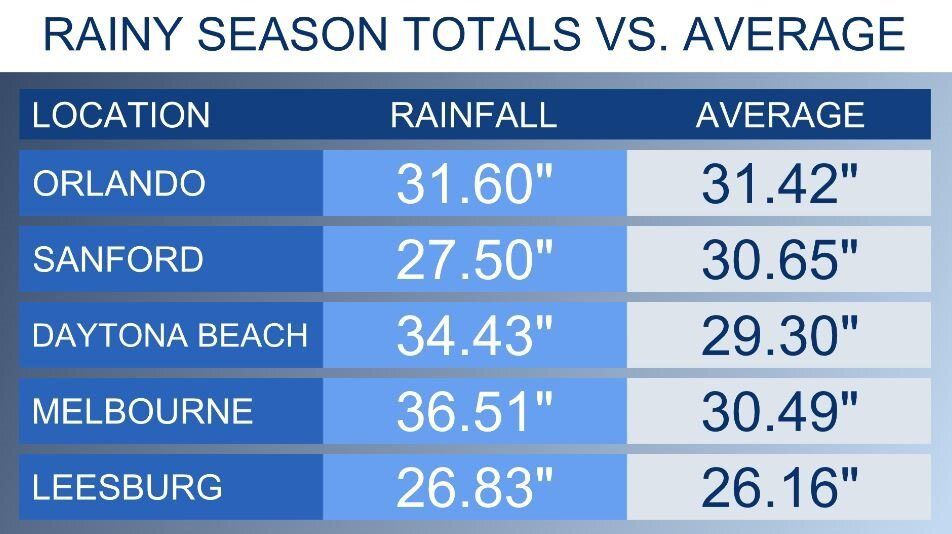Dry season on average begins in mid-to-late October.
This is when cold fronts slide through Central Florida once per week to every two weeks.
We rely on the cold fronts for rain during the dry season.
We are now seeing more cold fronts push through the region since we have entered October.
While we may not be officially to dry season just yet, it looks like we are quickly nearing it.
2023 Rainy Season Totals
So how did the rainfall stack up for Central Florida this rainy season?
Preliminary analysis shows since early June to mid-October that rainy season delivered normal to slightly above normal rainfall for most of east central Florida.
This was much needed rain because if you remember back to last winter and early spring, we saw drought conditions quickly expand across most of the region.
By late-April and May, we chipped away at the drought from some big storm events.
We then started the rainy season in early June, and the stormy season delivered even more beneficial rain throughout the summer months.
The big winners for rain were Melbourne and Daytona Beach.
Both cities finished with more than a five-inch surplus.
Melbourne collected more than 36 inches of rain since the start of June.
This was the most rain during the rainy season for Melbourne since 2016.
That is when the total rainfall was 36.01″.
This was over six inches above normal.
Daytona Beach received over 34 inches of rain.
Daytona Beach had slightly more rainfall last year, with over 35 inches.
But, a lot of that rain came during hurricane Ian in Sept. of 2022.
While east central Florida experience beneficial rain, much of the Gulf Coast was not as fortunate.
Areas around Tampa Bay are now in severe to extreme drought.
What’s Next?
This winter, a strong El Niño could be present.
During an El Niño, Florida is wetter and cooler than normal.
We could see more rain this upcoming dry season compared to the past few years.
But every El Niño is different, and there is no guarantee.
However, climatology and data suggest it could indeed be a wetter than average dry season.
Our team of meteorologists dives deep into the science of weather and breaks down timely weather data and information. To view more weather and climate stories, check out our weather blogs section.

